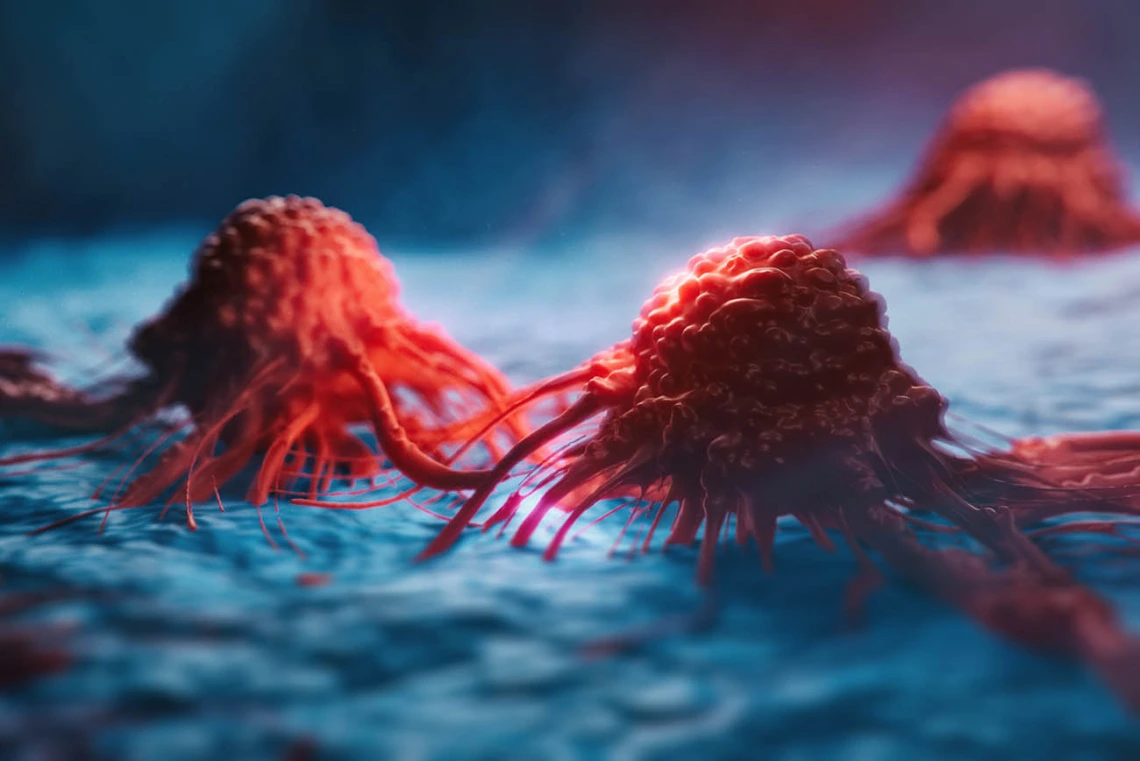UArizona Health Sciences Researchers Identify Mechanism for Slowing Cancer Growth
A newly discovered mechanism for controlling blood vessel growth in tumors points to possible strategies for developing new therapeutic interventions to overcome drug resistance.

Researchers discovered a mechanism tumors use to keep blood vessels growing, driving cancer growth and invasion.
Sometimes, cancer treatments fail when the tumor becomes resistant to therapy. A new study from the University of Arizona Health Sciences identified a mechanism that might allow researchers to overcome the issue of drug resistance, leading to more effective cancer treatments.

Noel A. Warfel, PhD, is an assistant professor of cellular and molecular medicine at the UArizona College of Medicine – Tucson and a UArizona Cancer Center member.
To treat a variety of cancers, doctors use drugs that target vascular endothelial growth factor (VEGF), a signal protein that stimulates the body to make new blood vessels. The drugs, called VEGF inhibitors, disrupt the growth of new blood vessels, thereby starving the tumor. However, the tumor inevitably finds new ways to stimulate blood vessel growth, leading to drug resistance.
Previously, Dr. Warfel showed that tumors with high levels of a protein called PIM1 kinase were resistant to VEGF inhibitors, thus enabling continued blood vessel growth in tumors. His most recent study, published in the journal Oncogene, builds on that work to reveal how PIM1 kinase causes resistance.
During angiogenesis, a protein called hypoxia-inducible factor 1 (HIF-1) turns on many genes needed for blood vessel growth. When oxygen levels are normal, cells destroy HIF-1 to stop too much growth. But in the prostate and colon cancer tumors the team studied, PIM1 kinase prevented HIF-1 from being destroyed. When HIF-1 levels remained high, the tumors grew rapidly.
“Normally HIF-1 wouldn't be turned on in healthy, oxygenated tissue,” Dr. Warfel said. “If we turn down PIM1, we might be able to turn off HIF-1 and reduce tumor angiogenesis and subsequent tumor growth, which has long been a clinical goal hampered by the lack of effective drugs that target HIF-1.”
Researchers found that drugs targeting PIM1 kinase can overcome resistance to VEGF inhibitors and show greater activity against the tumor than either drug alone. In the future, Dr. Warfel hopes to take the research into clinical trials as a new strategy to improve cancer therapy.
The team also created an antibody that detects when HIF-1 has been affected by PIM1 kinase. These biomarkers could one day be used to look at HIF-1 in cancer tumors and help predict which treatments are most likely to work.
Contact
Megan Guthrie
520-626-2280
mlg1@email.arizona.edu

